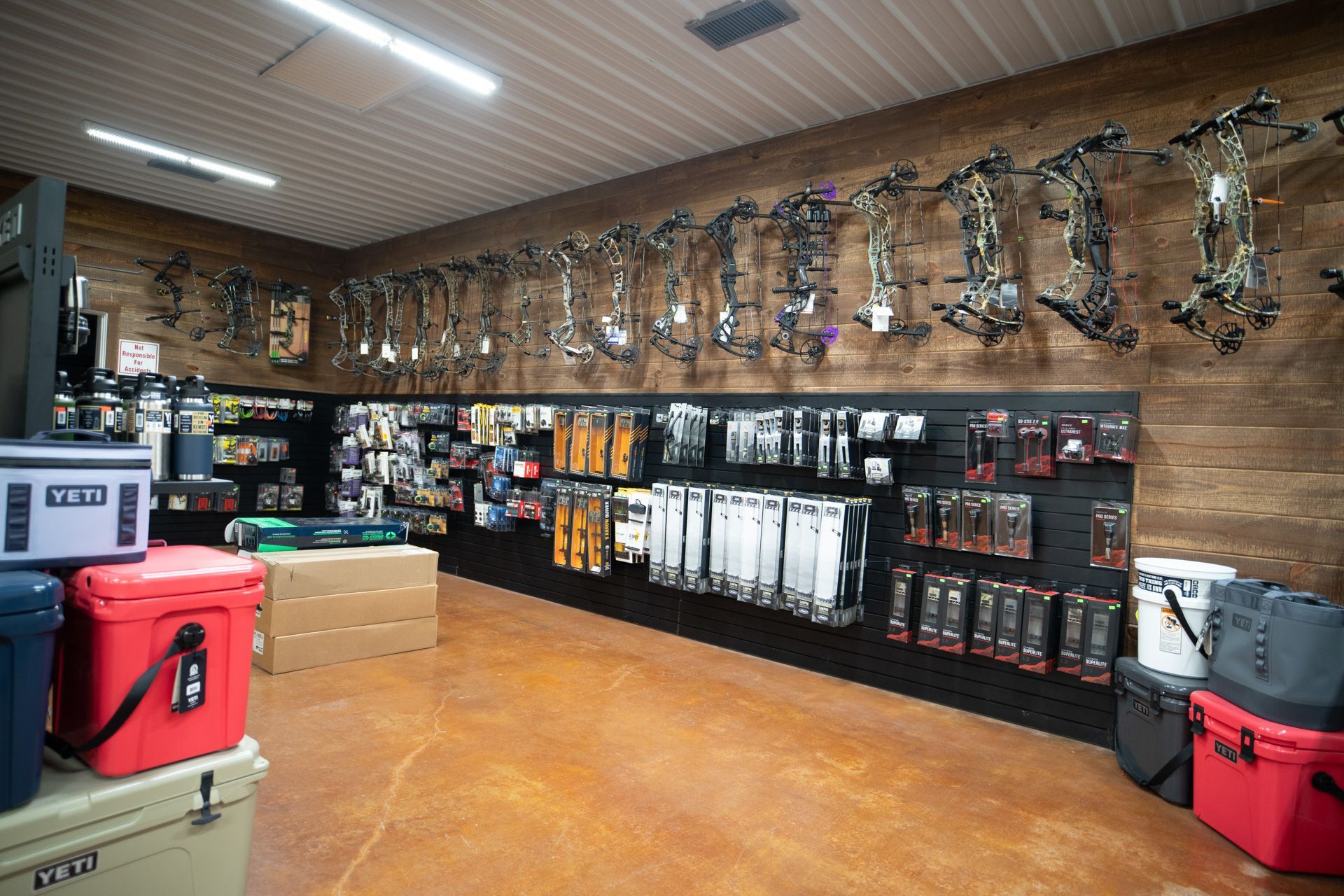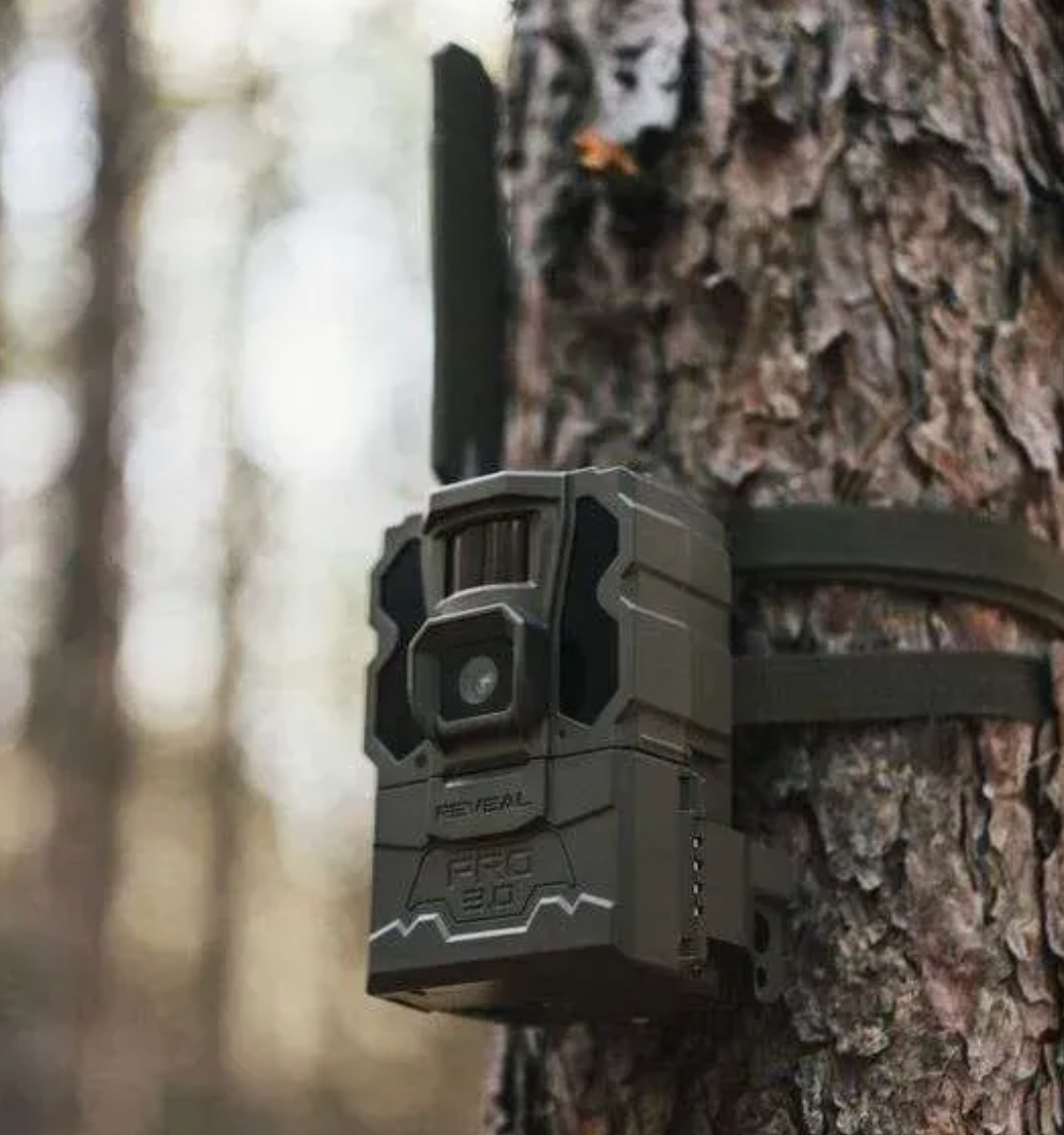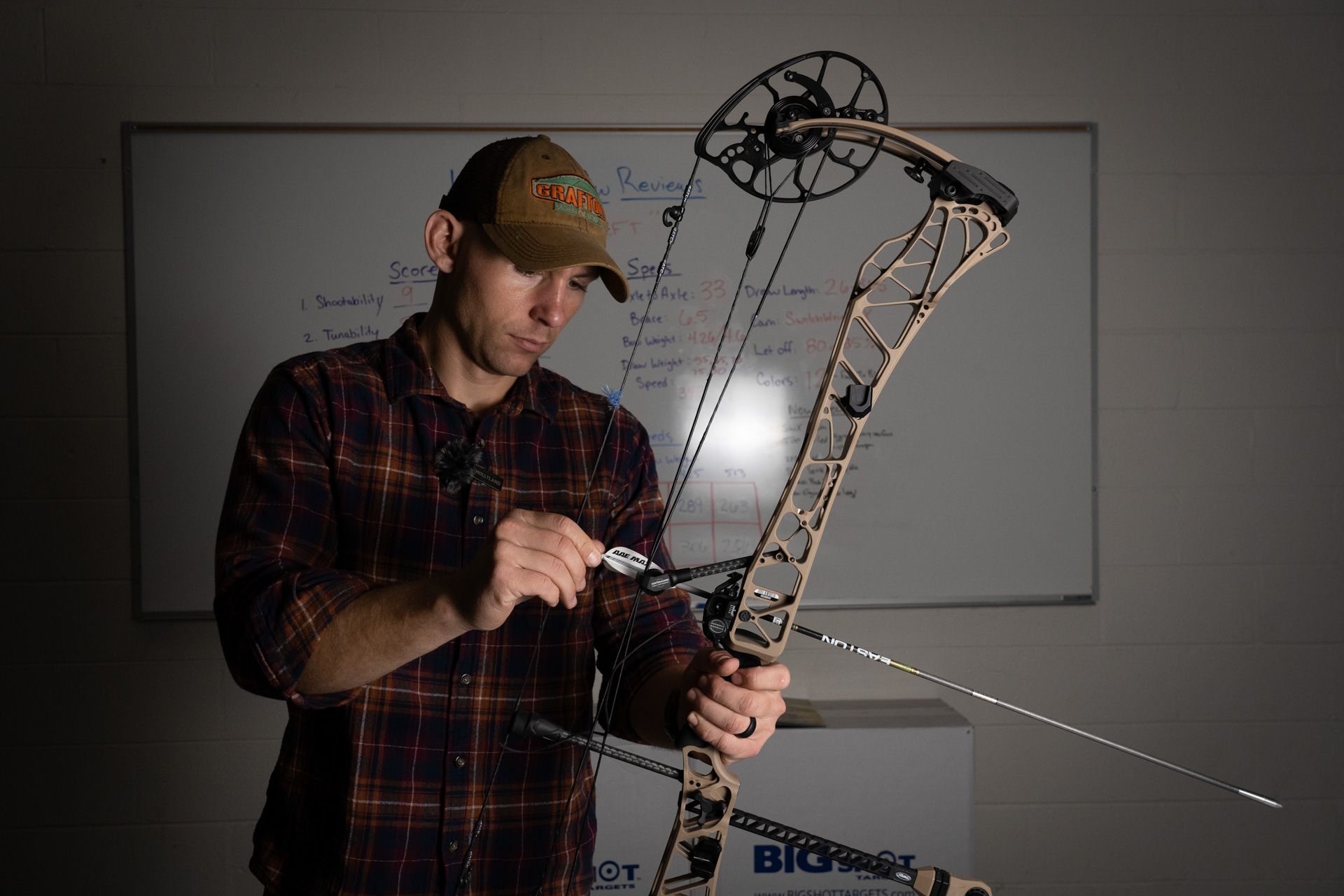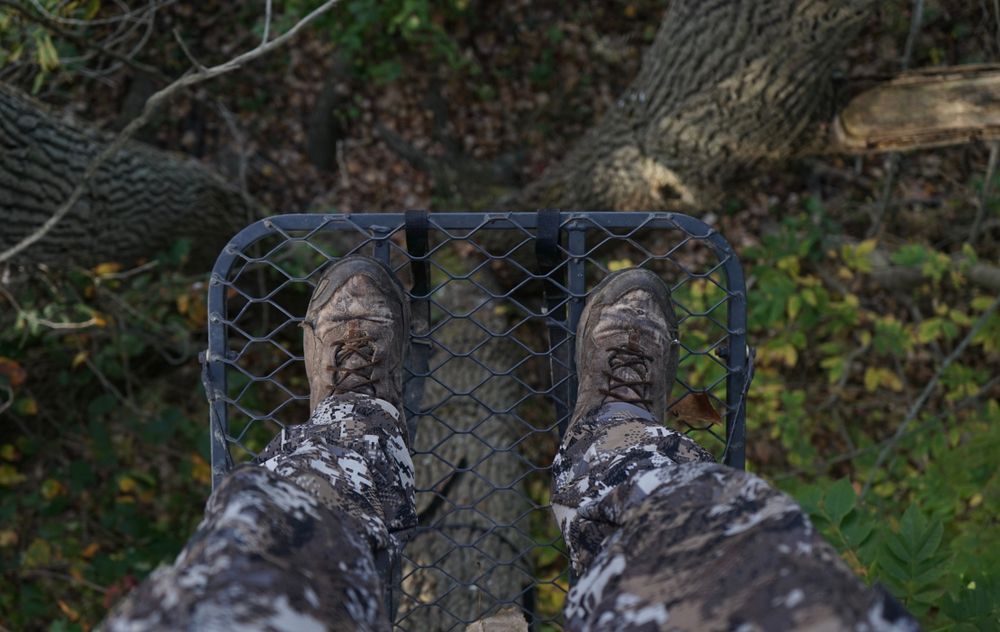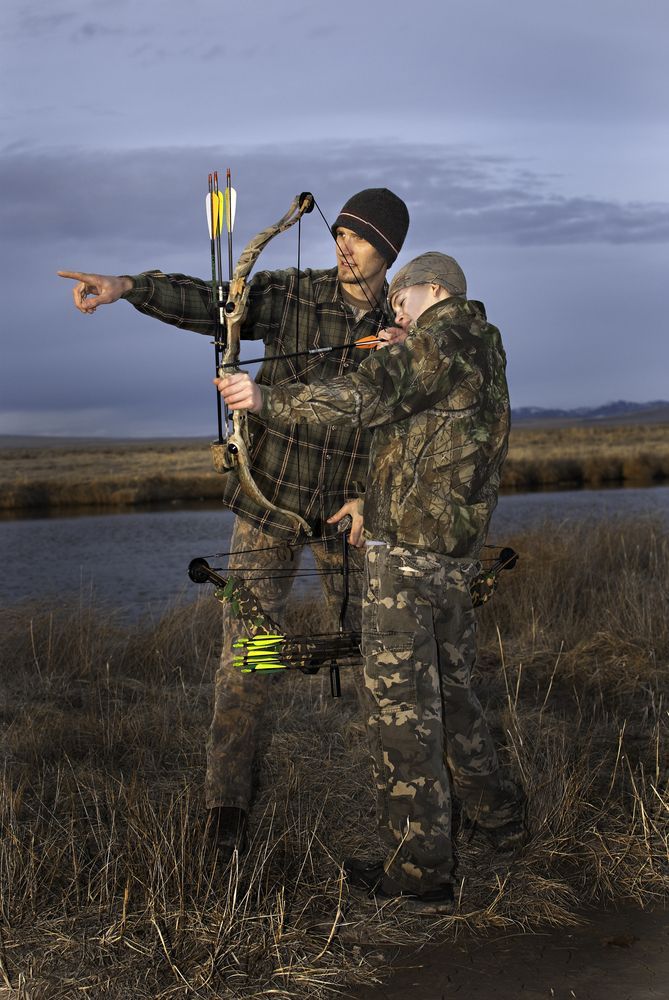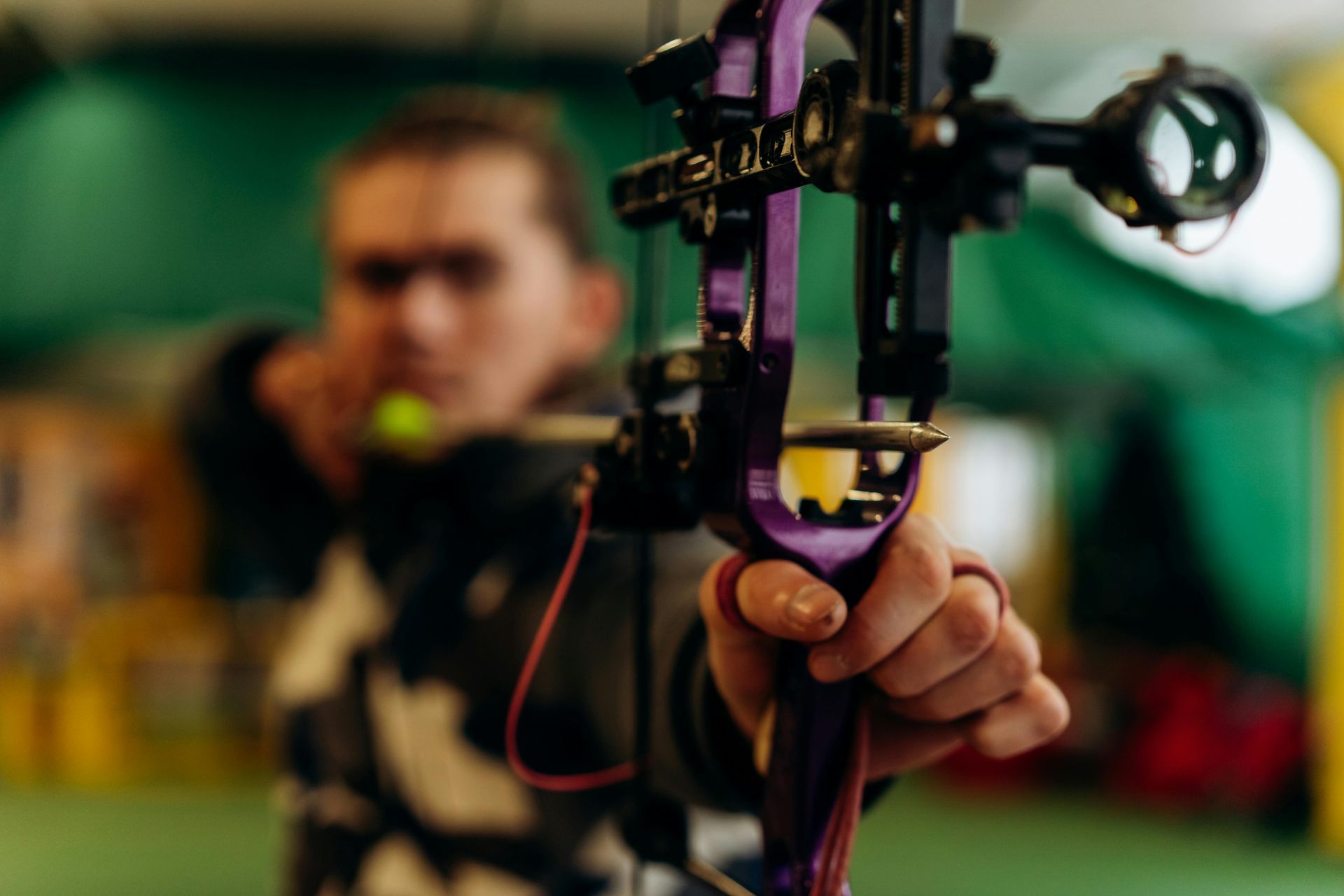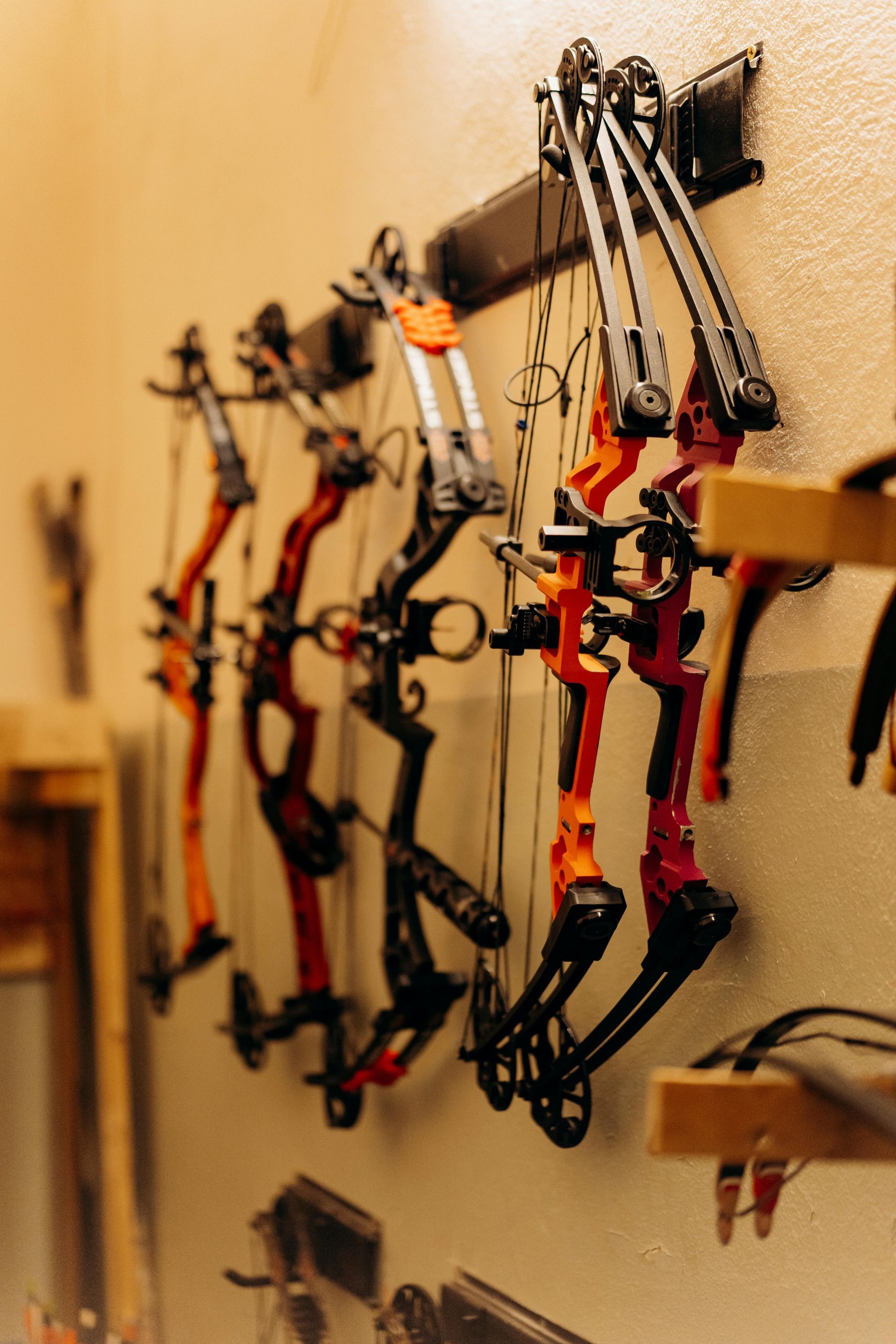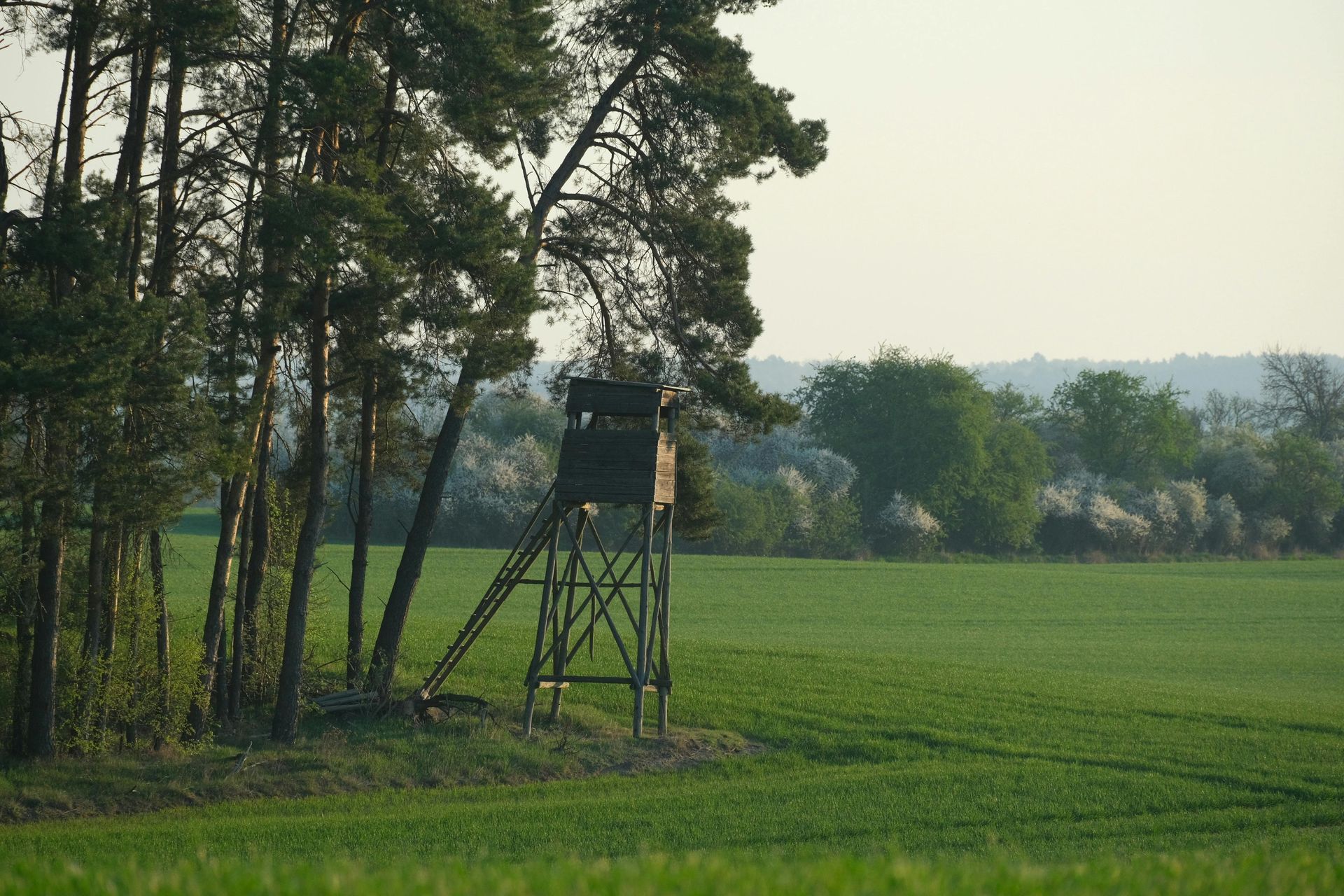The Complete Guide to Arrow Spine: Why It's Critical for Archery Accuracy
Grafton Archery & Outdoors
Arrow spine is the foundation of accurate archery shooting, yet many bowhunters and target archers overlook this crucial element. While shooters often focus on upgrading their bows, sights, or broadheads, the arrow spine directly impacts accuracy more than most realize. When your arrow spine doesn't match your bow setup, it creates tuning problems that can be difficult to diagnose and frustrating to solve.
What Is Arrow Spine and How Is It Measured?
Arrow spine measures how much an arrow shaft flexes under applied force. The standard measurement involves placing a 28-inch arrow shaft on two supports positioned 26 inches apart, then hanging a 1.94-pound weight from the center point. The deflection amount, measured in thousandths of an inch, becomes the spine rating.
Understanding spine ratings is straightforward: higher numbers indicate more flex. An arrow with a 400 spine rating bends more than one with a 300 spine rating, making the 400 spine arrow less stiff and more flexible.
Static Spine vs Dynamic Spine
Static spine represents the number printed on your arrow shaft. This standardized measurement tells you how much the arrow flexes under controlled laboratory conditions with specific weight and support points.
Dynamic spine describes how your arrow actually behaves when shot from your specific bow setup. Dynamic spine changes based on your draw weight, arrow length, point weight, release method, and cam system characteristics.
Both measurements matter because your arrow's performance depends on how these factors work together in your unique shooting setup.
Why Arrow Spine Directly Affects Your Accuracy
When you release an arrow, it flexes and oscillates during flight. Proper spine matching ensures this flexing follows a predictable pattern that your bow can work with effectively. Mismatched spine creates unpredictable flex patterns that lead to erratic arrow flight, inconsistent groupings, and broadheads that impact far from your field points.
Arrows that are too weak flex excessively, causing them to bend around your bow and veer off target. The excessive flex never fully recovers during flight.
Arrows that are too stiff don't flex enough to work with your bow's energy transfer, also causing accuracy problems. The arrow fights against your bow's natural tuning.
Even with perfect shooting form, incorrect spine prevents your arrows from flying consistently. This becomes especially problematic for bowhunters using fixed-blade broadheads, which amplify any flight inconsistencies.
How to Select the Correct Arrow Spine
Choosing proper arrow spine requires evaluating multiple factors in your shooting setup:
Draw Weight Impact: Higher draw weights require stiffer arrows to handle the increased energy transfer. As your bow's power increases, you need less flexible arrows to maintain control.
Arrow Length Considerations: Longer arrows flex more readily than shorter ones. Extended length typically requires moving to a stiffer spine rating to compensate for the increased flex tendency.
Point Weight Effects: Heavier broadheads or field points add forward weight that increases arrow flex. Adding point weight often requires switching to a stiffer spine to maintain proper flight characteristics.
Release Method Differences: Finger release shooters generally need weaker spine arrows compared to mechanical release users. The different energy transfer methods affect how arrows flex during the shot.
Cam System Variables: Aggressive cam systems deliver energy more rapidly, impacting arrow flex patterns. Faster, more aggressive bows typically require stiffer arrows to handle the energy transfer.
The most reliable method for spine selection involves testing different options with professional guidance. Experienced archery technicians can measure your specific draw weight, check your arrow length requirements, and recommend appropriate spine ratings based on your complete setup.
Benefits of Custom Arrow Building
Custom arrow construction goes beyond selecting colors and decorative elements. Professional arrow building ensures spine consistency, proper length cutting, and matched component integration throughout your arrow set.
Spine Indexing Process: Advanced shops perform spine indexing by identifying each shaft's stiffest side and aligning them consistently across all arrows. This process improves accuracy and consistency, particularly important for long-distance shooting or when trying to achieve field point and broadhead convergence.
Component Matching: Custom builds ensure your inserts, nocks, and fletching work together properly. Each component affects arrow flight, and professional building optimizes these interactions.
Quality Control: Custom arrows receive individual attention for straightness, weight matching, and proper component installation. Mass-produced arrows often vary significantly in these critical areas.
Tuning Your Bow to Work with Your Arrow Spine
Proper spine selection works hand-in-hand with bow tuning. Even correctly spined arrows need proper bow setup to achieve optimal performance.
Paper Tuning: Shooting arrows through paper reveals tear patterns that indicate spine and tuning issues. Clean bullet holes indicate proper arrow flight, while tears show specific problems.
Walk-Back Tuning: This method involves shooting at different distances to identify rest positioning issues that affect arrow flight.
Broadhead Tuning: Testing fixed-blade broadheads against field points reveals spine matching accuracy. Poor spine selection becomes immediately apparent when broadheads and field points impact in different locations.
Professional bow technicians can evaluate your complete setup, make precise adjustments to cam timing and rest position, and help identify the optimal arrow spine for your specific configuration.
Arrow Spine and Broadhead Performance
Fixed-blade broadheads act as flight amplifiers for spine problems. The blade surfaces catch air during flight and magnify any arrow wobble or inconsistent flex. Properly spined arrows allow fixed-blades to fly true and group with field points.
Fixed-Blade Requirements: These broadheads demand precise spine matching because they're unforgiving of flight inconsistencies. Small spine mismatches become major accuracy problems with fixed-blades.
Mechanical Broadhead Tolerance: Mechanical heads are more forgiving of spine issues because their blades remain closed during flight. However, proper spine still improves overall accuracy and consistency.
Testing your broadhead and field point grouping well before hunting season allows time for spine adjustments if needed. Shoot at various distances and compare impact points to identify potential spine matching issues.
Common Arrow Spine Selection Mistakes
Price-Based Selection: Choosing arrows solely on cost rather than spine requirements often leads to accuracy problems that cost more time and frustration than the initial savings.
Length Errors: Using arrows that are too long or too short for your draw length affects both spine requirements and safety.
Component Changes Without Spine Adjustment: Switching to heavier or lighter points without rechecking spine requirements can throw off your entire setup.
Brand Assumption Errors: Different manufacturers may label spine ratings differently, so always verify specifications rather than assuming consistency.
Skipping Tuning: Installing new arrows without proper bow tuning wastes the benefits of correct spine selection.
Professional Arrow Spine Consultation
Working with experienced archery professionals eliminates guesswork from spine selection. Qualified technicians can evaluate your complete shooting setup, recommend appropriate spine ratings, and provide custom arrow building services.
Professional consultation typically includes draw weight verification, arrow length measurement, point weight consideration, and shooting style evaluation. This comprehensive approach ensures your arrow spine matches your specific requirements rather than general recommendations.
The investment in proper spine selection and professional arrow building pays dividends in improved accuracy, reduced frustration, and confidence in your equipment performance.
Taking Action on Arrow Spine
Arrow spine affects every aspect of your shooting, from basic target accuracy to hunting broadhead performance. Whether you're preparing for competition or upcoming hunting seasons, correct spine selection provides the foundation for consistent, accurate shooting.
Bring your current bow setup to qualified archery professionals who can evaluate your spine requirements, provide custom arrow building services, and perform necessary bow tuning. This comprehensive approach ensures all components work together effectively.
Stop guessing about your arrow spine requirements. Professional guidance and proper spine selection will transform your shooting accuracy and equipment confidence.
